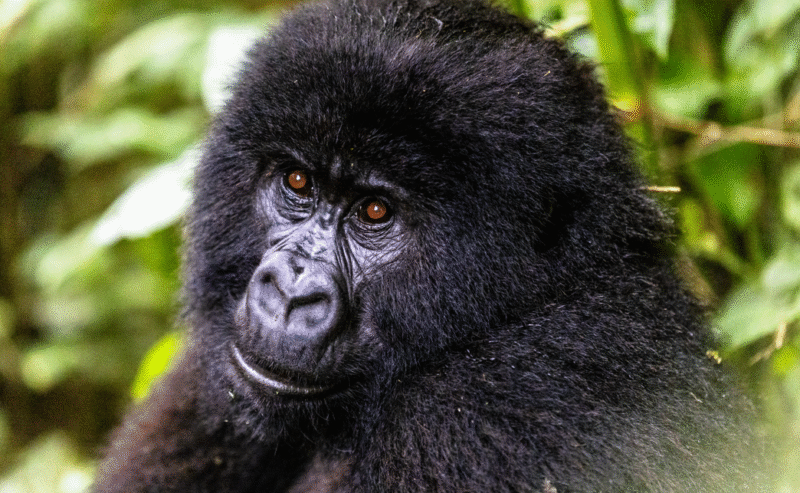
Support Virunga this Giving Season >
Only 6% of the world’s surface is covered by tropical rainforests, yet they contain more than half of all known terrestrial plant and animal species. Virunga National Park lies on the eastern fringe of the Congo Basin – Africa’s largest area of tropical rainforest – and hosts an incredible abundance of biodiversity. In this blog post, you can learn about some of Virunga’s incredible tropical-rainforest animals.
The African Forest Elephant
The African forest elephant is a close cousin of the savanna elephant, recognisable by its smaller ears, oval-shaped ears and forward-pointing tusks. They are found mostly in the Mikeno section of the Park, where Virunga’s mountain gorillas also roam.
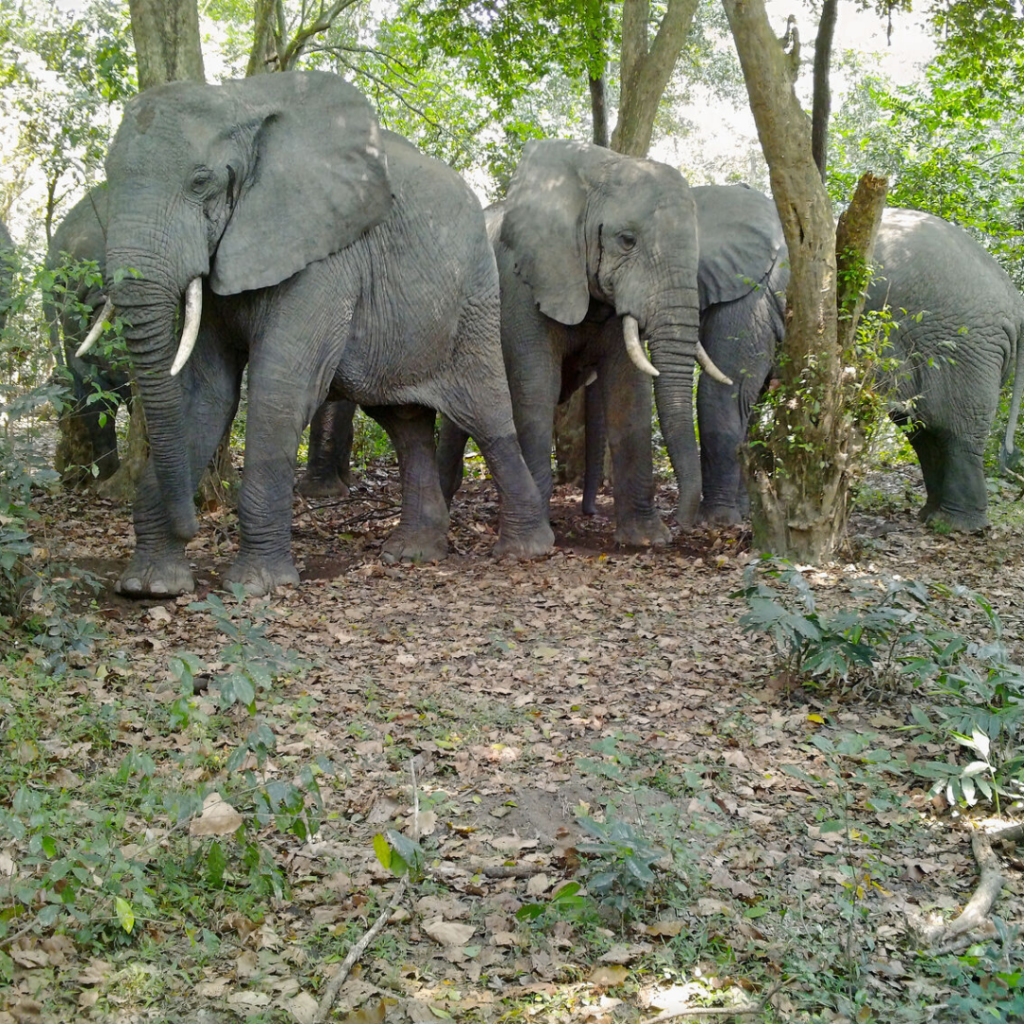
Photo credit: Virunga National Park camera traps
The Black-And-White-Casqued Hornbill
The black-and-white-casqued Hornbill is an arboreal species of medium-sized hornbill that feeds predominantly on fruits, though it has also been observed hunting lizards and snatching the eggs of other bird species. It acts as a natural seed disperser, digesting the fruit of fig trees and depositing their seeds through their dung throughout Central and Western Africa.
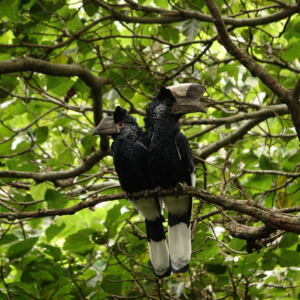
Photo credit: Melihat Veysal in Virunga National Park
The Three-Horned Chameleon
This incredible species of lizard can be found in East and Central Africa at altitudes of at least 3,000 m (9,800 ft). They can blend in with their rainforest environment to avoid predation by changing the color of their skin. This also allows them to communicate emotional states to other chameleons.
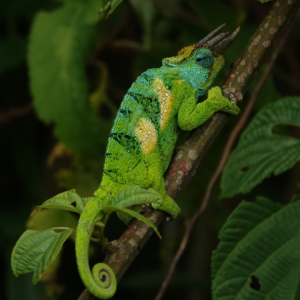
Photo credit: Melihat Veysal in Virunga National Park
The Narina Trogon
The magnificent Narina trogon is a dazzlingly colorful species of bird found in the forests of Virunga National Park and throughout Sub-Saharan Africa. Pairs take advantage of tree cavities in the forest canopy to incubate their eggs and raise their chicks. They feed on invertebrates such as caterpillars and spiders and occasionally on small reptiles.
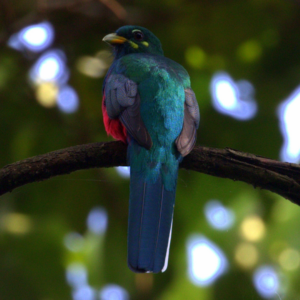
Photo credit: Melihat Veysal in Virunga National Park
The Eastern Chimpanzee
There are around 20 habituated chimpanzees, our closest cousins in the animal kingdom, living in the Rumangabo section of the Park. Reforestation efforts are helping to restore habitat and food sources for this endangered species, helping to assure its future in Virunga.
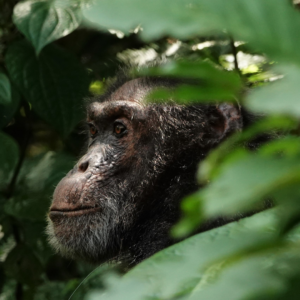
Photo credit: Melihat Veysal in Virunga National Park, Rumangabo
The African Leopard
The African leopard is found throughout Sub-Saharan Africa, although its territory has been severely fragmented, leading to a reduction in prey animals. Camera traps in the Kinyonzo area of the Park have helped Rangers to confirm the presence of this big cat in the Park.
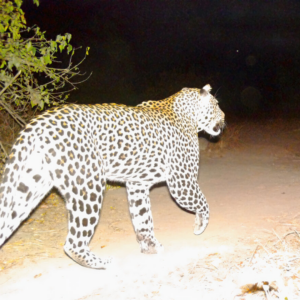
Photo credit: Virunga National Park camera traps, Kinyonzo
The Owl-Faced Monkey
The handsome owl-faced monkey is so-named for the white stripe that runs vertically down the center of its nose. They are found in the tropical forests of eastern DRC and are primarily frugivores, helping to disperse seeds, and supplementing their diet with buds, herbs, eggs, and small animals.
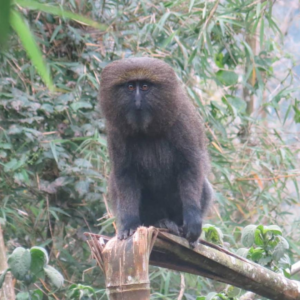
Photo credit: Benoit in Virunga National Park, Tshiaberimu
The Black-And-White Colobus Monkey
Black-and-white colobus monkey is the collective name for several species of colobus monkeys that are distinguishable by their lack of thumbs. They are found throughout the tropical rainforests of Virunga, where they mainly feed on a diet of leaves, using fermentative digestion to digest cellulose in a similar way to ruminant mammals.
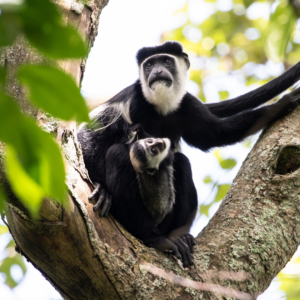
Photo credit: Nicholas Philipson in Virunga National Park
The Bushbuck
A bushbuck is a species of small solitary antelope, distributed throughout Sub-Saharan Africa and mostly found in wooded habitats, including Virunga’s tropical rainforests. As nocturnal animals, bushbucks are most active in the early morning, when they feed on the leaves of shrubs. Males have horns that spiral into a twist at the base of the skull.
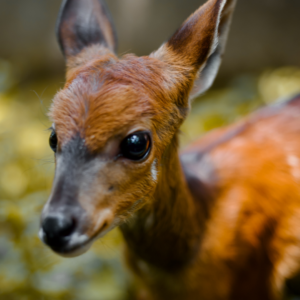
Photo credit: Robin Laime in Virunga National Park
L’Hoest’s Monkey
Sometimes referred to as the mountain monkey, the L’Hoest’s monkey is found exclusively in the high altitude forests of the DRC, Uganda, Rwanda and Burundi. Organized in female-dominated groups composed of around 10-15 individuals, there is just one male per group, who is forced to constantly defend his mating entitlement.
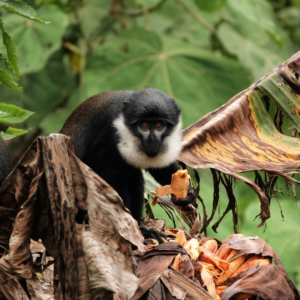
Photo credit: Melihat Veysal in Virunga National Park
Your support ensures that communities and nature can thrive together for the next 100 years.
Celebrate 100 years of Virunga with our commemorative anniversary book – every copy helps protect Africa’s oldest national park.
Shop Now
A limited-edition chocolate gorilla handmade from local cocoa — supporting Rangers and the gorillas they protect.
Shop Now
Purpose-driven gifts and merchandise supporting widows of fallen Rangers and the conservation of Virunga National Park.
Shop Now